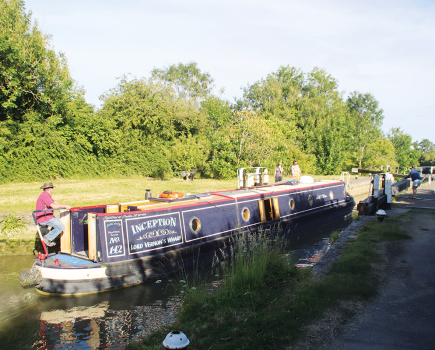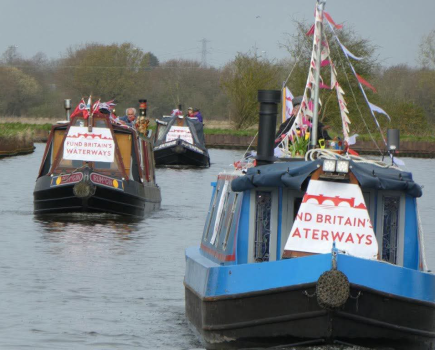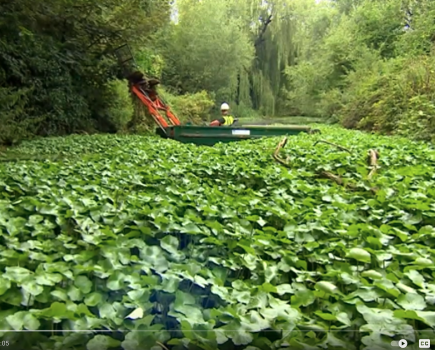We’ve said it before and no doubt we’ll be saying it again

We’ve said it before and no doubt we’ll be saying it again: one of the keys to building a great boat is doing great research. If you do your homework, you’ll end up with a far better boat than if you rush in without enough thought.
And here’s an example that proves it. For Jon and Jenny Coates, researching their boat was almost second nature, because he’s a civil engineer and she’s an occupational therapist – so identifying problems and coming up with solutions is what they do every day of the week.
And their research was all encompassing. Naturally, a lot went into choosing a builder – including spending several days going over boats at the Crick Show, then taking their plans to several yards. But they also spent time thinking about the shell, the layout, the interior design and the finishing touches. They researched suppliers to find exactly what they wanted, at the right price.
The result is Hyggelig, built for Jon and Jenny by Brayzel Narrowboats. It’s a boat that has plenty of interesting features and works well.
EXTERIOR
Jon wanted a boat with a purposeful looking bow and he spent a lot of time studying boats from different shell builders before choosing Tyler Wilson. The shell was built entirely at their yard in Stoke and the couple visited during the build; Jon says he was impressed at the quality of the welding.
Boat fitters will tell you that in a Tyler Wilson shell, a lot of the work is done by eye rather than by tape measure – and that’s possibly why the boats look so pretty. This 60-footer certainly does. The lines are lovely, and it’s not just the shape of the bow (which does indeed have a sense of purpose about it); the boat sits nicely in the water and everything looks in proportion.
The traditional look is emphasised by the choice of a classic dark green colour scheme (painted in-house at Brayzel using International paint), with red handrails, and brass portholes by Procast which have been powder coated so they won’t need polishing. The sign-writing is big and bold, by Mather Signs, based close to Brayzel.
The shell has all the usual Tyler Wilson features, such as scrolls in the handrails and cants and a boatman’s beam across the roof. But there are also plenty of bespoke aspects to the steelwork. The well deck, for example, is lowered, there are lockers on three sides and the cross one contains the bow thruster tube complete with a weed hatch. The deck is below the waterline, so any rain water drains into a sump with a pump, and a backup. The water tank is integral in the nose. The rear cruiser deck has gas lockers either side of a central doorway and, to reduce the number of steps inside the boat, there’s a step dropped into the deck itself. This could be a water trap, so it drains overboard.
The deck boards are made of iroko – a tropical African hardwood which has a lovely dark colour. A broad taff rail (and the cratch boards and a table at the bow) is made from sapele, another African wood that resembles mahogany. Together they give a real quality look to the boat.
Both bow and stern decks have lighting. The well deck is covered by a cratch, while a dodger around the cruiser stern offers a bit of protection.
LAYOUT AND FIT-OUT
This is a standard layout boat, so the saloon is at the bow. Next comes an L-shaped dinette and the galley. The shower room is a walk-though design, with the cabin beyond. At the stern, there’s a tiny room with an extra loo.
The fit-out uses oak and there’s an engineered oak floor in the rooms at each end of the boat; the galley and shower room have ceramic tiles. The ceiling is painted white.
SALOON AND DINETTE
As this is a standard layout boat, we’ll start at the bow with the saloon. The lowered well deck certainly makes entry to the boat easy. The full height doors mean there’s virtually no chance of banging your head, and there are no steps to fall down.
The saloon itself has a couple of free-standing chairs and a shelving unit down one side which culminates in a corner TV unit with a DAB radio inside, and speakers have been built in throughout the boat.
On the other side of the door there’s a Morso Squirrel stove on a raised hearth, with a drawer underneath. It complies with the latest guidelines on stove installation, so there’s a double insulated flue and the surround is heat insulated and has an air gap. The radiators throughout the boat are very stylish. They resemble organ pipes and are in a smart dark grey. Designer items such as this can cost a small fortune, but this is where good research can come to the rescue. Jenny scoured online suppliers to find better value options.
The lighting is good; there’s a combination of halogen downlighters, with high level concealed LED strips that wash the ceiling with light.
The L-shaped dinette is raised and provides plenty of storage with drawers underneath and the seats have an access door in the end. It converts into a guest double bed via a frame that pulls out and the table, which is on Desmo legs, dropping down. There’s a set of side doors opposite.
GALLEY
The flooring in the galley changes from oak to ceramic tiles. That’s because there’s underfloor heating in this part of the boat and the shower room.
The worktops are smooth grey Corian complete with lovely sweeping curves. Each side, the worktops continue along the gunwales to connect the room to other parts of the boat. The drainer is milled into the worktop and there’s a circular stainless steel sink with a smart arched tap.
There’s plenty of storage space with good runs of cupboards on each side. Because the route through the galley takes you from one side of the boat to the other, there’s room for two under-gunwale cupboards which are surprisingly spacious. The couple decided against any kind of complicated magic corner fittings for the dead corner in the galley, instead opting for shelves providing storage for things which aren’t needed very often. Every inch of space is used, with drawers in the kickboards.
There are just a couple of high-level cupboards, to keep the room feeling spacious, and extra light is brought in by a Houdini hatch in the ceiling. There’s a second set of side doors. The oven is a full-size domestic one by Belling. This was important for Jenny because she’s a keen baker and cook. To get around the fact that full-size cookers are deeper than ideal on a boat, the oven has been positioned on the bulkhead facing down the boat so there’s no need for unequal-sized worktops each side, or a bulge to accommodate the depth. Above the oven there’s a four-burner Belling gas hob.
Behind the hob there’s a dramatic feature wall, with white, grey and black tiles. Jon asked Andrew Crook to tile it in a random pattern; when he asked exactly what this meant, Jon and his daughter, Libby, spent a couple of hours at the computer, designing the random layout!
Other equipment includes a 240-volt fridge and a small freezer, which is positioned under the dinette. Jon opted for 240-volt appliances rather than 12-volt ones because his research indicated that they’re generally more efficient – even taking into account the need to have the inverter on all the time.
SHOWER ROOM
At first sight, this walk-through shower room appears to be fully tiled. In fact, the walls are lined with a laminate called Respatex, which is designed to look like tiles. It’s a very effective look.
The quadrant shower is a generous 900mm; in the opposite corner there’s a unit with a Corian worktop including a moulded basin, and another smart tap. Above, a high-level unit has a mirrored door that includes some stylish fused glass.
Jon and Jenny wanted to include something local in their Lancashire-built boat so they found a glass studio and commissioned some pieces. There’s another in the very attractive arched door between the shower room and the cabin. The glass adds a touch of interest, particularly as there’s something of a story behind it. The arched door is testament to the skill of the Brayzel team.
The loo is a Thetford cassette, but it’s a model with a ceramic bowl – and without the usual high back. This is a special option but one that makes the toilet look more like the one at home and less like a cassette.
CABIN
Walking from the shower room into the cabin, you pass through a mini-corridor formed by wardrobes that offer plenty of space, and they have lights inside so you can see what you’re doing. The oak cabinet work has nicely contrasting metal handles that Jenny sourced online from Hafele.
The cabin has a cross bed, with pull-out slats for the infill. There are drawers in the base and there’s also room for long-term storage.
There’s a run of high level cabinets above the head of the bed and there are bedside cupboards both sides. Next to the bed, the central heating control is handily placed, which means that Jon can turn it on without getting out of bed.
There’s a further wardrobe at the rear of the cabin which has a radiator inside, so turning it into an airing cupboard or a wet locker as required. The door swings across to divide the cabin away from the utility area.
UTILITY AREA
Having a toilet both sides of the bed was one of Jenny’s must-haves. So space has been found at the very back of the boat. This area also provides a bit of a buffer between the cabin and the outside, which will come into its own in cold weather.
The electrical cupboard is on one side, opposite the second loo, which is a compact but perfectly usable room. It has the same type of cassette toilet as the main shower room, plus there’s a little hand basin and a small Zanussi washing machine. This is actually wider than the door, so Brayzel have cleverly hinged the door frame so that, if the washing machine does ever have to come out, it can do so without having to dismantle the boat. It’s forward-thinking on items like this that makes some builders stand out.
TECHNICAL
Technically, this boat is fairly straightforward, which Jon’s research had suggested would be the best way to go. The engine is a Beta 43, which has a good record, and which every boatyard in the country has worked on. There’s a Vetus bow thruster, but it’s the more powerful 75kgf model, chosen on the grounds that if you’re going to have one, it might as well be powerful.
The heating system is more interesting. There’s a 5kW Webasto diesel boiler, which doesn’t just run the radiators, but the underfloor heating in the galley and shower room, too; the underfloor system (pipes set into a special board) is simply treated like an extra radiator, off the main system.
In addition, Hyggelig has a heat exchanger, so the heat from the engine can be used to warm the radiators – it’s a great idea, particularly if you go winter cruising. It’s operated by a simple switch in the electrical cupboard.
Electrical power comes from five 110Ah batteries (plus another for the engine). There’s a Victron 3kW inverter/charger for a 240-volt supply and also a Victron battery monitor, so you can easily see what the state of charge is.
ON THE WATER
As you’d expect with a Tyler Wilson hull powered by a Beta 43, there are few surprises when you’re out cruising. Tyler Wilsons are some of the best handling boats out there and this is no exception. It goes where it’s pointed and turns extremely well. If you need a bit of help in the wind in the marina, then the bow thruster is powerful enough to be of real assistance.
The tiller is at a nice height and the Morse control sits comfortably on a column on one side of the cruiser deck; the bow thruster buttons are on the back of the same column – easy to use, but not in danger of being knocked accidentally. The dials are inside the rear doors but are still visible.
The cruiser deck has plenty of room for crew and the gas lockers provide somewhere to sit. Just remember that dropped step in front of the doors!
CONCLUSION
This is a boat with a lot going for it, not least a very pretty shell from a well known builder and a quality fit-out to match. There are some nice little ideas and you can tell the owners have given real thought to what they’ve asked for.
And the price is good. Hyggellig cost £115,000 which is good value – helped, no doubt, by Jon and Jenny finding good quality fittings at reasonable prices.
And it’s yet more proof that if you do your homework and don’t just rush in, you’ll end up with a boat that really suits you and your cruising.
Image(s) provided by:
Archant







